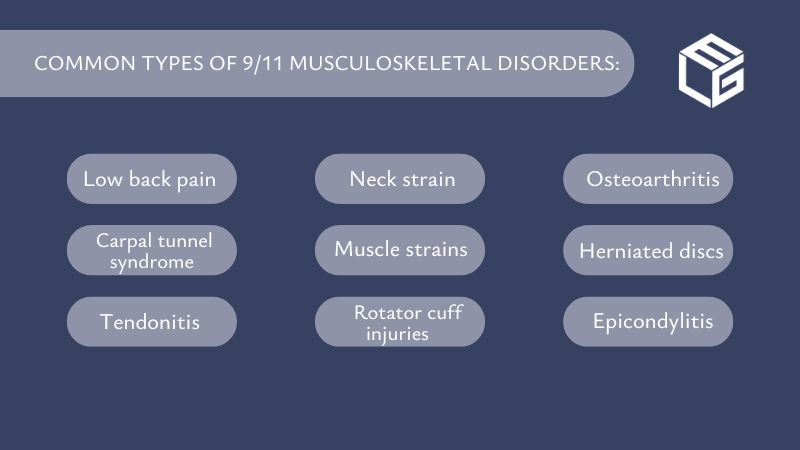-
About »
- Insulin MDL
-
Cases »
- Diseases
- Testimonials
- Government
- Contact
- Get Help Now
-

Musculoskeletal disorders were one of the most reported medical conditions by first responders and recovery response team members. Their heroic work during and after 9/11 meant that they risked their lives and opened themselves up to the possibility of developing musculoskeletal disorders. Their jobs were physically demanding, which resulted in musculoskeletal-related health conditions.
If you were one of the World Trade Center (WTC) responders who suffered musculoskeletal disorders, you may be eligible to file a claim through the 9/11 Victim Compensation Fund. We encourage you to get legal help from our skilled attorneys to file your claim.
Claim ApplicationMusculoskeletal disorders are health conditions that affect the muscles, bones, and joints. In the case of the brave World Trade Center responders, many of them suffered musculoskeletal disorders due to intense physical activities during the 9/11 relief and recovery operations.
The WTC responders were dedicated to their jobs, even if it meant lifting heavy objects and debris, walking on uneven surfaces, and even moving into tight spaces. The combination of all these staining movements largely contributed to the development of various musculoskeletal disorders.
The typical signs and symptoms of musculoskeletal disorders include:
There are several types of musculoskeletal disorders, and being diagnosed with one may make a person eligible for financial assistance under the 9/11 Victim Compensation Fund (VCF). Below are common types of occupational musculoskeletal disorders:
These are examples of musculoskeletal disorders that can qualify for a claim, but the list is not limited to only these conditions. To file a claim under the 9/11 VCF, individuals must have had a physical injury certified and confirmed for treatment by the World Trade Center Health Program (WTCHP). The medical condition should also be related to the 9/11 events.
Keep in mind that while musculoskeletal disorders can be included, not all conditions may qualify. It’s best to consult a trusted, experienced lawyer to know if you are eligible for a VCF claim.
Under the 9/11 Victim Compensation Fund (VCF), the maximum compensation for non-cancer conditions like musculoskeletal disorders can reach up to $90,000. This amount aims to cover the healthcare expenses spent on their medical condition. It also covers lost income and offers financial relief for the pain and suffering a victim has endured.
Reach out to ELG Law to know if your musculoskeletal condition diagnosis qualifies you for a claim under the 9/11 Victim Compensation Fund (VCF). Our dedicated attorneys have decades of experience, so you know you are in the proper hands. They are ready to support you and file your claim for musculoskeletal disorders. Don’t hesitate to contact our lawyers to get the compensation you rightfully deserve.